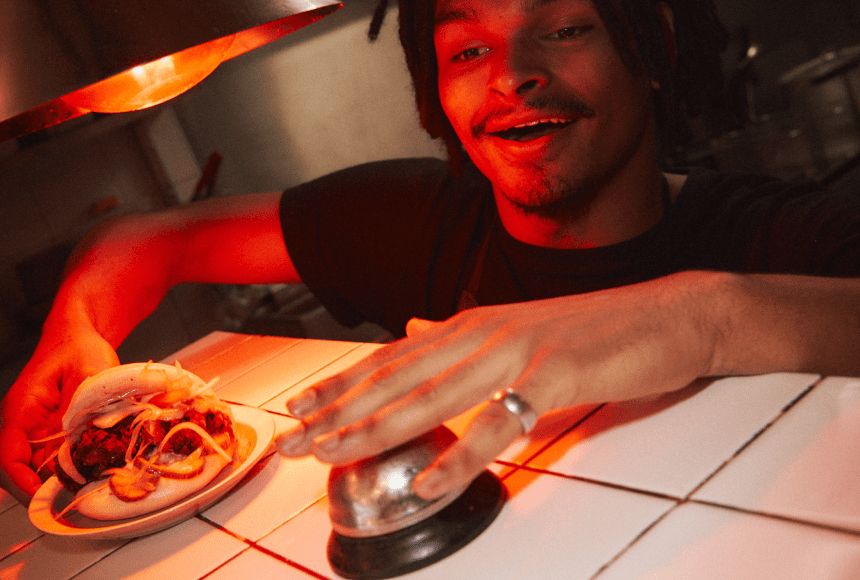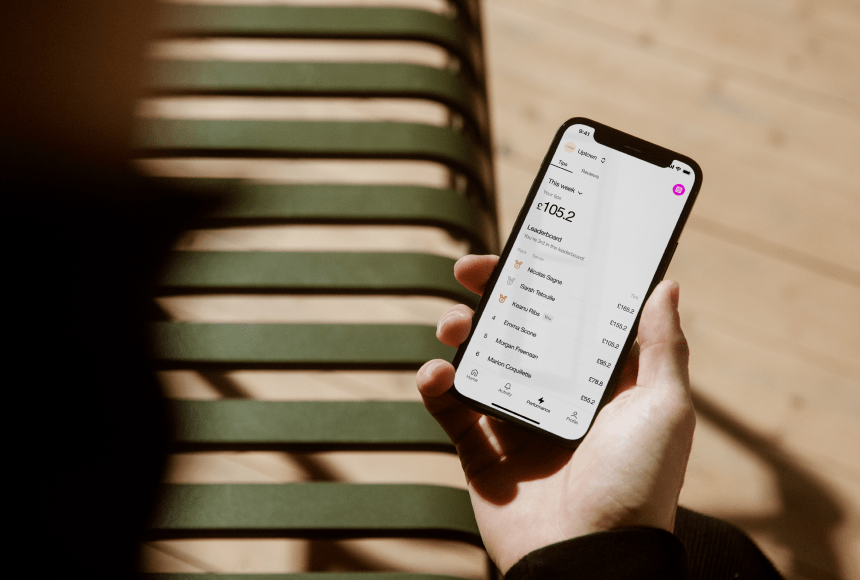
Streamline Your Weekend Brunch Service in Manchester with QR Code Ordering
The Rise of Brunch Culture in the Heart of Manchester
Few cities in the UK blend tradition and modern flair quite like Manchester. Home to iconic music, world-class football, and a burgeoning restaurant scene, Manchester has become a weekend hotspot where brunch has turned into a near-sacred ritual. From artisan bakeries in the Northern Quarter to airy rooftop cafés by the canals, the city’s diverse offerings keep brunch enthusiasts spoiled for choice.
According to Visit Manchester, weekend footfall in Manchester’s city centre has increased steadily over the past few years, particularly on Saturdays and Sundays. Many visitors come specifically for the thriving culinary scene, and local residents often seize the weekend to sample new brunch menus. It’s no surprise that restaurateurs must find solid strategies to stand out and handle these hectic rush hours. To do so effectively, increasingly, they’re turning to easy-to-use, digital tools—like QR code ordering—to ensure every plate goes out in a timely manner, and all guests receive an impeccable dining experience.
Before we dive deeper, it’s worth painting a quick picture: A bustling Manchester Sunday morning sees lines of people waiting for the perfect poached eggs, avocado toast, or vegan pancakes. Many restaurants experience back-to-back seatings for brunch. Somewhere in the hustle and clatter of coffee cups, you have staff juggling physical menus, scribbling orders by hand, and trying to keep track of countless special requests—an all-too-familiar scenario rife with mistakes and slow service.
The Weekend Rush Dilemma
When the weekend brunch surge hits, every minute counts. Long queues can deter prospective diners, even if your restaurant boasts the best scrambled eggs in the city. The wait might be related to:
- Limited time to greet and seat the steady stream of arrivals.
- Struggles to manage large groups, extra requests, and complicated orders.
- Prolonged waiting times for both the order-taking process and the bill payment at the end.
- Staff fatigue: repeated back-and-forth from tables to the kitchen, or confusion in relaying requests.
It’s the kind of scenario that can transform a typically upbeat weekend into a real logistical headache. When servers are run off their feet, customers sense it—and not in a way that helps build a five-star review on Google. During these high-pressure hours, little hiccups like a missing side dish or a delayed coffee can make otherwise patient diners feel overlooked.
Many modern restaurant owners in Manchester are aware of these challenges and consistently look for ways to deal with the high demand. However, implementing changes that genuinely streamline the operation can be tricky. Sourcing extra staff might not always be feasible, and reconfiguring the layout of your dining space only goes so far. In such moments, the conversation often shifts to technological solutions that tackle capacity efficiently.
Why QR Ordering Outshines Traditional Methods
QR code ordering isn’t just a fad. It represents a forward-thinking approach to minimising wait times and elevating guest satisfaction. If you’re new to the concept, here’s a quick rundown: Instead of flipping through paper menus, customers scan a code on the table using their smartphone, see the menu digitally, and place orders directly. Once they’re done, they can shift smoothly to payment—without waiting for a paper bill.
Gone are the stacks of scribbled notepads and the inevitable margin for human error. Above all, QR ordering means staff are freed from routine tasks and can concentrate on creating a warm, welcoming atmosphere. By removing potential bottlenecks, you can turn the chaotic brunch rush into a more controlled, curated experience—which is precisely what modern diners crave when venturing out for a special weekend meal.
So, let’s explore a few reasons why QR ordering excels over traditional pen-and-paper methods, especially during peak brunch hours:
- Speed and Efficiency: Orders are automatically sent to the kitchen, reducing the time between seat, order, and meal arrival.
- Reduced Human Error: With direct input into the system, the accuracy of each dish and modification soars.
- Enhanced Upselling Potential: Digital menus can highlight add-ons or specials, gently prompting customers without overwhelming them.
- Simple, Swift Payment Process: No wrestling with physical bills or card machines. Guests settle up whenever they’re ready.
On busy weekends, that last point is critical. The dreaded wait for your table to get the bill, split it, and tip can lead to drawn-out turnover, making queues longer for your next wave of diners. With QR ordering, that friction practically dissolves.
Key Benefits of QR Ordering for Manchester Brunch Spots
If you still wonder whether this really moves the needle, let’s put things into perspective. Below are some added advantages specifically relevant to brunch-heavy spots in Manchester:
- Faster Table Turnover: By slashing the wait time for ordering and payments, you move guests along more efficiently. For brunch, where customers don’t usually linger as long as they might for a late, boozy dinner, it means you can seat more parties throughout the morning.
- Better Guest Engagement: The interactive digital menu can spotlight fresh pastries or daily specials in real time, which can’t always be done with a static, printed menu.
- Accurate Allergy and Dietary Info: In a city known for its diverse dining options, accommodating various diets is paramount. QR solutions make it straightforward to include detailed allergen notes, eliminating guesswork.
- Weather-Proof Flexibility: Manchester is famous for its unpredictable weather. If you plan to seat people outdoors under sunshades or in a heated patio area, digital ordering circumvents the need to bring laminated menus or risk soggy paper menus on a drizzly Sunday.
- Contact-Less Hygiene: Even as we move beyond the peak of health concerns, many people still appreciate minimal staff contact. QR ordering elegantly meets that preference.
A Quick Comparison: Traditional vs. QR Ordering
| Aspect | Traditional Ordering | QR Ordering |
|---|---|---|
| Order Speed | Wait for server availability | Order immediately after scanning |
| Accuracy | Subject to misheard details | Customer inputs orders themselves |
| Menu Updates | Requires new print runs | Instant digital updates |
| Payment | Waiting for the server, card machine, or separate receipt to split bills | In-app, immediate settlement |
| Staff Utilisation | Server invests much of their time in taking/processing orders | Server can focus on customer interactions and speedier service |
The difference is remarkable. Fast, accurate ordering translates to shorter lines, improved customer feedback, and higher revenue potential.
Real-Life Snapshot: A Manchester Brunch Spot Embracing QR Codes
Picture Ellie’s Eatery, a fictional café in the heart of Chorlton. For five years, Ellie’s was known for its inventive eggs florentine, but staff often felt the Sunday rush was an unbeatable wave. They tested different approaches: hiring extra hands on weekends, adding a separate pastry counter, and rearranging their dining room. Still, the order-taking queue and subsequent bill request wait times remained a major bottleneck.
That changed when Ellie’s Eatery introduced QR code ordering using a dedicated digital platform. Customers could seat themselves, pull out their phones, scan the code on the table, and browse an up-to-date menu that highlighted new vegan pastries and limited-edition brunch cocktails. Once ready, they tapped a button, and the order went straight to the kitchen’s display. By the time they were ready to leave, paying took less than a minute—no waiting for a server to drop off the bill. According to Ellie’s manager, table turnover increased by almost 20% on busy Sundays, and not a single staff member was laid off; instead, employees could be more attentive, greet guests warmly, share personal menu recommendations, and handle specific allergic requests with greater care.
Ellie’s Eatery also noticed a spike in their Google reviews—positive, of course—since diners raved about the smooth ordering process and short wait times. QR ordering even prompted many customers to leave extra tips due to the swift service. While that might not always be the case for every business, it’s an encouraging example of how a restaurant can remain crowd-pleasingly busy without sacrificing quality or calm.
Practical Tips for Implementing QR Ordering During Weekend Brunch
Making the leap into QR ordering doesn’t have to be complicated. Below are some practical tips drawn from industry experience to help your Manchester brunch spot roll out a seamless digital transition:
- Start With a Pilot: Introduce QR ordering at a limited number of tables first. Observe usage patterns, gather customer feedback, and iron out technical glitches.
- Train Staff Thoroughly: Although QR ordering is user-friendly, staff need to understand the platform’s interface, so they’re ready to guide less tech-savvy guests. Be sure your team is well-versed in how to fix minor issues or reprint a lost QR code quickly.
- Place Clear Instructions on Tables: QR codes are simple, but guests who aren’t used to them still benefit from short, written directions: “Scan this code to browse our menu and place your order!” Make this sign big, prominent, and visually appealing.
- Incorporate Mouth-Watering Imagery: If your platform allows it, include high-quality photos of your iconic brunch dishes—like your fluffiest pancakes or signature eggs royale. Food photos can drive up the average ticket size by enticing diners to order that extra side or dessert.
- Promote Loyalty & Social Proof: Add a quick link for customers to post a Google or TripAdvisor review straight from their phones. In a hospitality-focused city like Manchester, positive online reviews often go a long way in attracting new patrons.
Remember, the ultimate goal is to enhance your guests’ experience rather than complicate it with flashy software. Keep things user-friendly, solicit real-time feedback, and pivot if needed. The solutions you adopt today should support—not distract from—the genuine, welcoming vibe of your establishment.
From Payment Terminals to Seamless Smartphone Transactions
For many restaurant owners, the biggest learning curve in adopting QR ordering revolves around payment. Traditional payment terminals—those familiar card machines—may still hold their place for some diners, but the shift to a device-led process marks a real evolution in how your customers settle up. It’s important to:
- Offer Multiple Payment Options: A well-implemented QR solution should let customers pay via major credit cards, mobile wallets, or direct bank payments.
- Keep It Clear: Provide a short line of text that explains how to apply tips, split the bill, or use promotional discount codes seamlessly.
- Highlight Security Measures: Although online payments are increasingly common, reassure your guests that their transaction is encrypted and secure.
While some may worry about the learning curve, most diners catch on quickly. Great menu design plus an intuitive interface means little to no confusion. And if you choose a user-friendly solution—something like sunday’s platform—you’ll likely find that people adapt readily to the new normal. What’s more, the staff’s role shifts from collecting payments to providing top-tier hospitality, forging better customer relationships.
What Makes Manchester Perfect for QR Ordering?
Manchester isn’t afraid of innovation. From classic brick-and-mortar pubs reimagined into modern bistros to local pop-ups that thrive on creative marketing, the city has always embraced fresh approaches. There’s also a large student community, a tech-savvy workforce, and a booming tourism sector—all factors that breed an open-minded audience keen to adopt new ways of doing things.
At the same time, competition is fierce. Over the last decade, the number of restaurants, bars, and cafés in Greater Manchester has increased significantly—an expansion spurred by the city’s cultural renaissance. In this environment, offering an enhanced customer experience can be a clear differentiator. By incorporating QR code ordering, you demonstrate a commitment to fast, convenient, and straightforward service. Diners often share such positive experiences online, bringing more eyes to your location and forging a reputation as a forward-thinking brand.
Beyond Ordering: Leveraging QR Codes for Guest Engagement
QR ordering certainly speeds things up and boosts turnover, but that’s not the only perk. This technology platform can integrate additional features that deepen customer engagement. Consider the following:
- Automated Review Prompts: Once the payment is complete, a quick prompt can appear inviting customers to leave feedback on Google. This can help you gain more reviews and climb Manchester’s local search rankings in the process.
- Loyalty Program Integration: Everyone loves a free coffee after a certain number of visits, or a discount on a total bill after collecting loyalty points. QR-based systems can incorporate these perks, ensuring your customers feel rewarded for their continuing patronage.
- Instant Updates and Notifications: Running a seasonal special on your Lancashire cheese platter or a new item like black pudding hash? Let your customers know in real time through notifications popping up on the digital menu.
- Targeted Upselling: Rather than constant staff interruptions, your digital menu can suggest additions, like extra sides or bottomless mimosas, precisely at the moment diners are browsing main dishes.
The blend of speed, convenience, and interactive potential sets QR ordering apart as more than just a novelty. When well-executed, it becomes a powerful tool to foster stronger customer relationships, leading to repeat business and word-of-mouth recommendations—both invaluable for any busy Manchester brunch spot.
Embracing Tech Without Losing the Human Touch
Some restaurateurs worry that technology might detract from the personal facets of dining. Indeed, those personal interactions—servers explaining the day’s specials, managers checking on tables—can form a large part of your restaurant’s identity. However, with QR ordering, staff aren’t replaced; they’re refocused. Instead of spending precious minutes scribbling orders or dealing with multiple trips to the POS system, they can invest more energy in building rapport with customers.
It’s crucial to continue weaving that warmth into the digital experience—pure functionality can feel cold. Make sure your platform design aligns with your brand aesthetic: choose enticing photography, keep language friendly, and highlight your best-sellers in a casual, witty tone if that resonates with your place. Consider sprinkling in personal notes, such as a short anecdote about the origin of your sourdough starter or how your chef discovered local suppliers in the Greater Manchester area. This fosters an emotional connection, reminding people that even though ordering is digital, real people stand behind the scenes, passionately crafting each dish.
Stepping Into Manchester’s Brunch Future
Brunch in Manchester has come a long way from bacon sandwiches in corner cafés to diverse culinary experiences that include everything from eggplant shakshuka to chocolaty churro waffles. But with this evolution comes a clear need for smart solutions that can meet high demand without sacrificing excellent service.
QR code ordering is one such solution—a modern tool that not only addresses speed and efficiency but also enriches the diner’s journey. If implemented with care, it retains all the elements that make weekend brunch a special, communal event.
Restaurant owners who adopt digital ordering often find the process to be simpler than expected. Solutions like sunday are designed to slip comfortably into existing workflows without uprooting your identity or consumer base. Indeed, you can run your busy brunch shift exactly as you envision it, only with fewer lines, happier customers, and a staff that handles the flow with calm professionalism.
Frequently Asked Questions
Below are a few common questions about introducing QR code solutions in a bustling brunch environment:
- 1. Will older guests struggle with QR code ordering?
Most platforms are quite intuitive, featuring simple, user-friendly interfaces to guide them through. For anyone who’s not comfortable with a smartphone, you can still keep a small stack of traditional menus on hand. - 2. Are QR codes only for chains or large restaurants?
Not at all. Small, independent cafés and bistros are often best positioned to reap the benefits of a nimble ordering system. QR ordering can level the playing field. - 3. What if a customer’s phone battery dies?
It’s wise to have a backup plan, like a few conventional menus or a tablet device on standby. This minimises disruptions and ensures no one is turned away because of a phone issue. - 4. How can I integrate tipping?
The digital menu can include tipping options at checkout—guests simply tap the tip percentage or amount they prefer. Quick and transparent for everyone involved. - 5. Can I customise the design of my QR menu?
Absolutely. Most QR ordering systems offer ways to add your branding and flair. You can even highlight best-sellers or incorporate images of your star specialties to boost sales.
As you navigate the evolving restaurant landscape in Manchester, keep in mind that technology remains an ally—particularly if your aim is to enhance both the diner’s experience and your own operational efficiency. QR ordering might feel new, but the principle behind it is timeless: make customers happy by giving them great service, and they’ll keep coming back.
Find out more today
Drop us your details below and we’ll reach out within the next 24
All your orders – in and out.
Our mobile ordering solution allows your customers to order and pay whenever they are ready with an integrated QR code.


